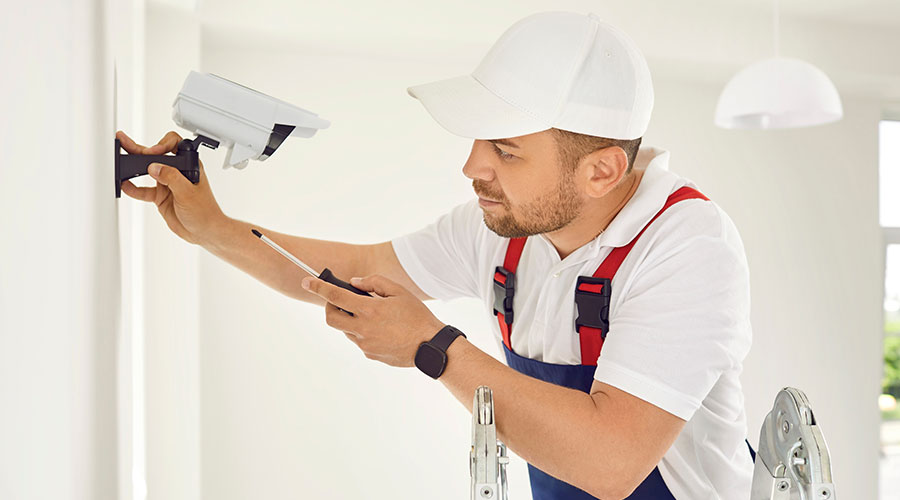Using Smart Building Strategies To Meet Energy, Sustainability Goals Part 2
Importance of People in Smart Building Strategies
Experts agree that people play a crucial role in smart building strategies. For Shircliff, the three pillars of a smart building strategy are buildings, people, and technology. "The buildings must be enabled and the people, including process, aligned to best leverage newer technologies and basic information technology (IT)," he says.
Smyth believes a program that focuses on educating employees and hospital staff is essential. Communicating what smart building strategies are being implemented can be accomplished by an email that explains the precise situation, according to Smyth. "Let's say we want to turn off all computers when they are not in use," says Smyth. "So we show how many kilowatts per hour can be saved and how that adds up as we get more cooperation. Then we may show what that savings can represent. For instance, we may be able to add another piece of equipment for our patients."
Walsh also believes keeping building occupants informed helps in energy conservation and sustainability efforts. He uses a newsletter to tell building occupants how much paper is being diverted from landfills, the advantages of using automated faucets, and even the benefits of variable frequency drives.
Like Smyth, Walsh has found informing building occupants encourages them "to pitch in with everyone else. We also get more feedback and that is a good thing."
Zimmer sees a smart building strategy as combining IT, equipment, and the efforts of highly skilled people.
"The universe of technology solutions that create an intelligent building has evolved considerably over the last decade," says Zimmer. "Innovations in energy-saving solutions, smart sensing, remote monitoring, automated diagnostics, as well as a myriad of Internet-based solutions have made their way into the domain of intelligent building solutions. The solutions allow buildings to become more responsive to the needs of occupants. The solutions, however, do require oversight by professionals with a high level of expertise."
Smart Building Strategy
Despite the gains facility executives have seen from implementing smart building measures, less than half say that their organizations have developed an overall smart building strategy. (See Figure 5.) By comparison, most organizations have overall strategies in place for energy efficiency and sustainability.
Figure 5. Does your organization have an overall: R=826
Smart building strategy (R=878)
Energy efficiency strategy (R=858)
Sustainability strategy (R=845)
Among organizations that do have energy efficiency or sustainability strategies, a majority of respondents say they rank smart building strategies as top priorities for those strategies. (See Figures 6 and 7.)
Figure 6. How important is a smart building strategy to your current energy efficiency strategy? R=631
Not implementing smart building measures
Figure 7. How important is a smart building strategy to your current energy sustainability strategy? R=511
Not implementing smart building measures
Although a majority of respondents say smart building strategies are top priorities, the percentages are far smaller than the number that say smart building strategies have helped improve performance in energy and sustainability. This discrepancy suggests that many facility executives may be failing to integrate smart building planning, on a strategic level, with energy efficiency and sustainability planning.
But the survey suggests the next few years could see a significant upswing in the implementation of smart building measures. While the percentages of those who expect to take the two most common measures, lighting upgrades or recycling, decline compared to what was done the past three years (lighting upgrades down from 83 percent to 62 percent; recycling down from 70 percent to 39 percent), many smart building measures show an increase. (See Figure 8.)
Figure 8. Which of the following steps do you anticipate your organization taking in the next three years? R=775
Integration of building systems
Automated monitoring and reporting
Automated fault detection & diagnostics
Increase compared to implementation in past three years
The increase for "integration of building systems" is particularly noteworthy for two reasons. One is because it comes after three years of integration improvements in many facilities. The other is because integration is vital as the underpinning of a smart building strategy.
"Systems integration is central to a smart building strategy," Zimmer points out. "By integrating individual systems and buildings into a common user interface, operational activities in the various subsystems can be monitored to detect inefficient operating conditions, allowing corrective action in order to achieve high levels of systems optimization."
Moores believes all building systems should be accessible through the building management system and well interfaced for Internet access. Facility executives and others "should have access to pertinent information via dashboards," says Moores.
Gerald Cotter, associate director of engineering and project management for Connecticut State Colleges and Universities, believes systems integration has to make smart building strategies "as simplified as possible."
That's not to say that systems integration guarantees a smart building. "Systems integration is an important element but will not in and of itself create value," says Rob Murchison, co-founder of Intelligent Buildings, LLC. "There are many high-tech, integrated systems that are set on override or that don't use interoperability."
"Smart building strategies need to be easy enough for everyone to understand," says Moores.
It's essential to have a strategy for systems integration, rather than simply integrating systems for the sake of integration. "A systems integrator may come in and offer an overlaying control system that will monitor every system and subsystem in the building through one interface," says Andrew Reilman, associate partner at Syska Hennessy Group, a consulting engineering firm. Reilman doesn't believe that is an appropriate strategy for every building. "The question is, why are you doing it?" Gigabytes of data that no one uses or knows how to extrapolate are useless. "The facility executive needs an easy way to extract and collate data to verify energy model results."
Analytics is emerging as an important area of smart building technology. The survey showed that about one in five respondents are now using analytics to improve energy efficiency while another one in three are considering that option. (See Figure 9.)
Figure 9. Are you currently using or considering analytics
software to improve energy efficiency in your buildings? R=797
Using analytics to improve energy efficiency:
Considering analytics to improve energy efficiency:
Neither using nor considering analytics software to improve energy efficiency:
Role of the BAS in Smart Buildings
Basic control over building
functions is essential to smart
building strategies. Building
automation is generally the
cornerstone because its
aim is to optimize energy
performance while enhancing
occupant comfort. Employing
sensors, controllers,
actuators, and software, a
building automation system
(BAS) may serve many
functions, including:
- Optimizing start/stop
functions on various building
systems and subsystems.
- Scheduling maintenance.
- Employing predictive fault
detection.
- Detecting abnormal operating
conditions.
- Alarming and preventive
actions to minimize damage in
case of emergency.
Depending on the BAS chosen
and the preferences of the
organization, decisions can
be made manually by building
operators, or facility staff can
use embedded intelligence
algorithms to automate
actions.
The range of capabilities of a
BAS makes it well-suited to be
the basis of a smart building.
And the survey shows that
most facility executives
do identify the BAS as the
foundation of smart building
strategies. (See chart below.)
The University of Southern
California (USC) has a smart
building strategy that allows
facilities management to see
what's happening in every
campus building, according
to Andrew Reilman, associate
partner at Syska Hennessy
Group.
Which do you think should be the foundation for smart building strategies? R=795
Building automation system
"They know what's going on in
operations and maintenance
across building systems, down
to the filters and their product
numbers," Reilman notes.
USC's building management
system has a facilities
management system layer that
allows sophisticated control
strategies. "But you could
also treat a 50-story high-rise
building as a 'campus,'" says
Reilman, to accomplish similar
smart options.
Almost by definition, many
BAS functions make a building
smarter. For example,
Thomas F. Smyth, director,
facility services at Cobbleskill
Regional Hospital, believes
the advantage of a building
automation system is "less
human error. The BAS lets
you create setpoints and
parameters for temperature
in a specific space, for
instance, so that is not left to
someone's memory. It also
does monitoring functions so
that we don't have unhappy
surgeons in the operating
room. Of course, the BAS is
only as good as the people
operating the system."
Tom Walsh, chief engineer
for Transwestern Commercial
Services, believes another
excellent use for BAS in smart
building strategies is "trending
data, particularly watching
how and when temperatures
rise and fall. This is invaluable
information to use for planning
energy use."
In addition to controlling,
monitoring, and trending
strategies, a BAS can serve
another valuable smart
building function, says
Gerald Cotter, associate
director of engineering and
project management for
Connecticut State Colleges
and Universities. "The BAS
can show others what we
are doing to save energy and
encourage sustainability.
When people can see the
benefits, they are more
willing to spend money on
improvements."
Related Topics:














